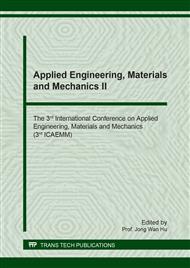p.145
p.152
p.157
p.162
p.171
p.179
p.184
p.189
p.196
Three-Layer Clad Strip Casting Using a Vertical Type Tandem Twin Roll Caster
Abstract:
This paper shows improvements made to a vertical type tandem twin roll caster and the appropriate casting conditions necessary to cast three-layer clad strips, the base strip of which has a lower solidification temperature than the overlay strip. In experiments, 4045 aluminum alloy was used for the base strip and 3003 aluminum alloy was used for the overlay strips. The roll speed was 30 m/min. By connecting the overlay strips to the base strip one at a time and cooling the base strip to between 450 and 530°C after applying the first overlay strip, a sound three-layer clad strip – defined as one in which the interfaces between strips are clear and do not separate during bending-to-failure tests – could be cast. The tensile shear testing between the base and second overlay strip was improved as the base-strip temperature was increased to 450-530°C range.
Info:
Periodical:
Pages:
171-178
Citation:
Online since:
July 2018
Authors:
Keywords:
Price:
Сopyright:
© 2018 Trans Tech Publications Ltd. All Rights Reserved
Share:
Citation:


